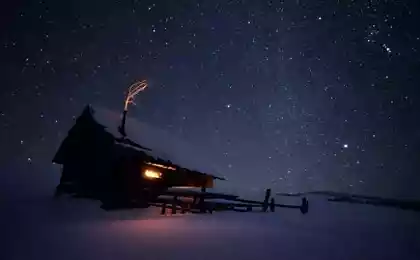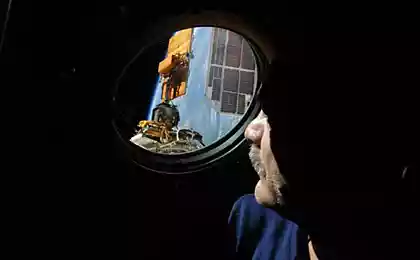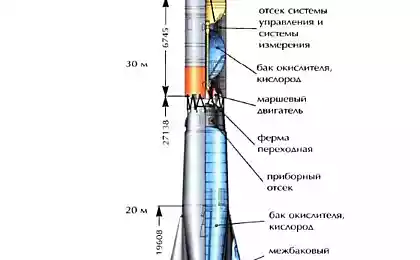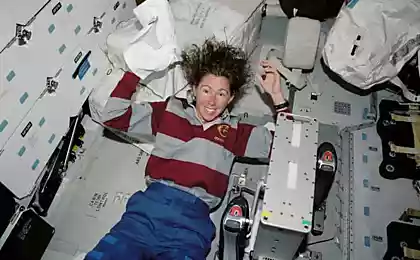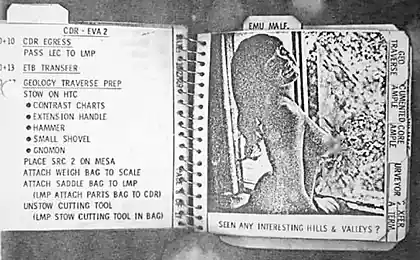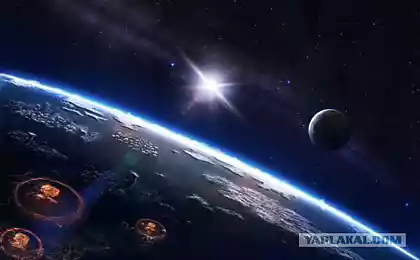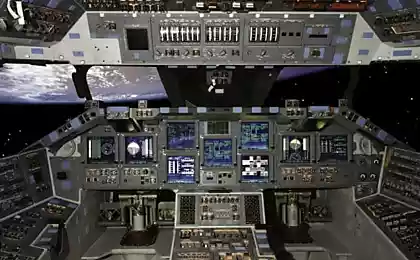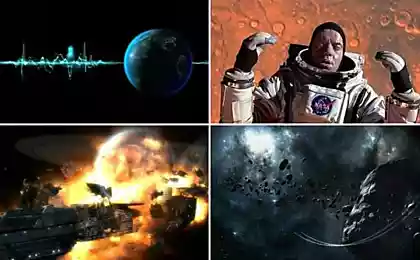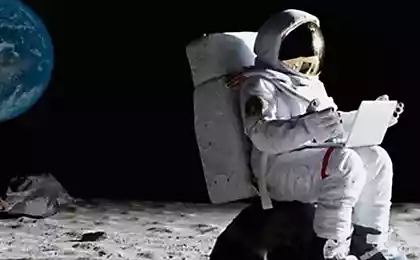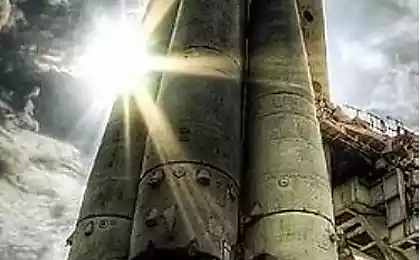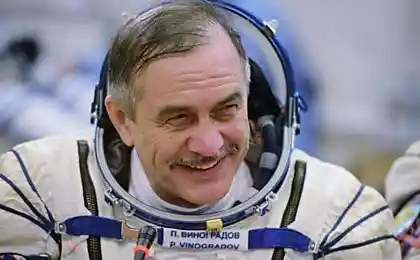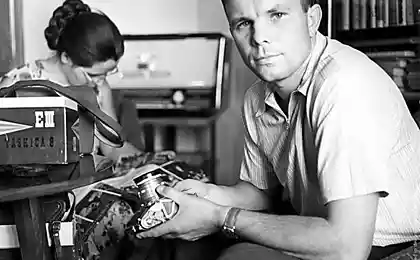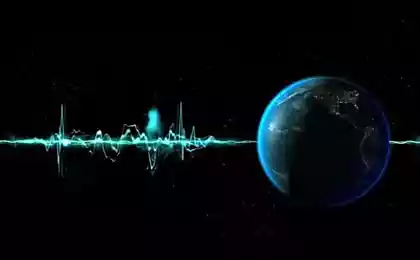827
8 shocking facts about space
Everything that is connected with the other planets and the cosmos as a whole is traditionally seems mysterious, incomprehensible and surprising. And no matter how much we have not studied other universes and even to the neighboring planet Earth, questions always more questions than answers. In the continuation of the post - shocking facts about space! I'm sure most of you have never even heard!
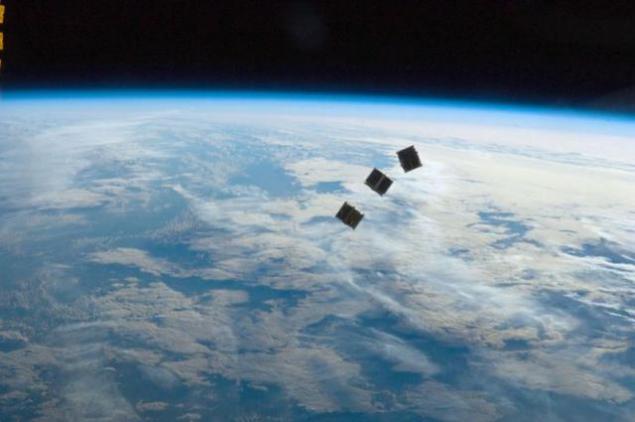
The temperature in the space to the Earth's orbit is + 4 ° C
To be precise, it is not the Earth's orbit, and the distance from the sun equal to the distance of the orbit of the Earth. And for a blackbody, ie such that fully absorb the sun's rays do not reflect back.
It is believed that the temperature in the space tends to absolute zero. Firstly, it is not so, because the whole known universe is heated to 3 K cosmic background radiation. Secondly, stars near the temperature rises. And we live pretty close to the sun. Strong heat protection suits and need spaceships because they are included in the shadow of the Earth and our star can not warm them up to the specified 4 ° C. In the shadow of the temperature can drop to -160 ° C, for example at night on the moon. It's cold, but still far from absolute zero.
Here, for example, the thermometer readings onboard satellite TechEdSat, which rotated in low Earth orbit:
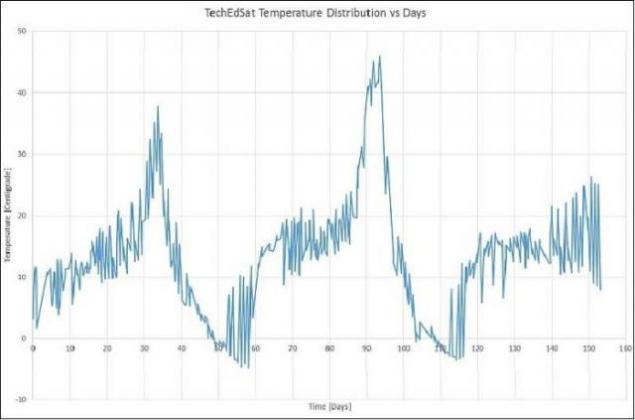
It is influenced by the earth's atmosphere also, but in general, the graph shows is not the terrible conditions that adoption is in space.
Venus is sometimes leaden snow
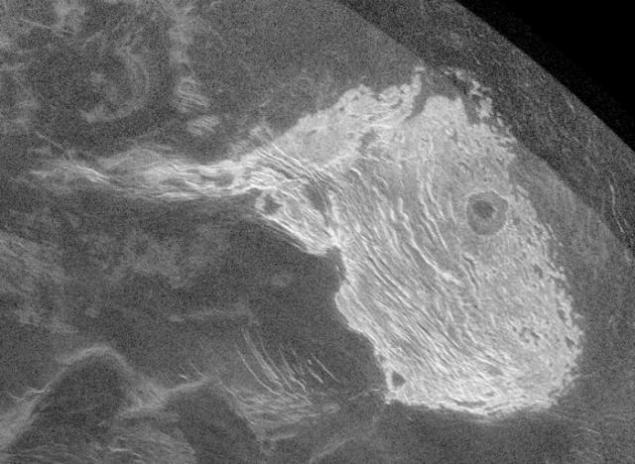
This is perhaps the most striking fact about the cosmos, which I learned not so long ago. Terms and conditions on Venus is so different from anything that we could imagine that veneriane could fly safely in hell on earth to rest in a mild climate and comfortable conditions. Therefore, no matter how sound weird phrase "lead snow," Venus - it is a reality.
Thanks to the radar of the American probe Magellan first 90, the researchers found on the tops of the mountains some Venusian coating with high reflectivity in the radio. Initially suggested several versions: a consequence of erosion, deposition of iron-containing materials, etc. Later on, after several experiments in the world, we have come to the conclusion that this is the most natural snow metal consisting of bismuth and lead sulfides. In the gaseous state, they are released into the atmosphere during volcanic eruptions. Then the thermodynamic conditions at an altitude of 2600 m contribute to condensation and precipitation of compounds at higher elevations.
In our solar system, the planets ... 13 or more
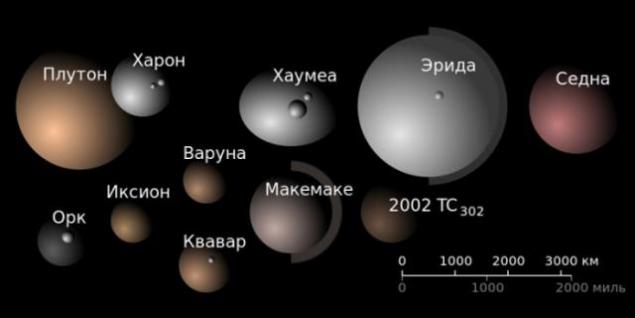
When Pluto was demoted from planet, good manners was the knowledge that in the solar system eight planets. However, at the same, we introduced a new category of celestial objects - dwarf planets. This "nedoplanety" which have a rounded (or close to it) form draws the satellites are not, but in this case can not clear its own orbit from the less massive competitors. Today, it is believed that these five planets: Ceres, Pluto, Hanumea, Eris and Makemake. The closest to us - Ceres. A year later, we learn about it much more than it is now, thanks to the probe Dawn. So far we only know that it is covered with ice and two points on the surface of her water evaporates at a rate of 6 liters per second. About Pluto also learn in the next year, thanks to the station New Horizons. Generally, as in 2014 will be a year in space comets, 2015 promises to be a year of dwarf planets.
The rest of the dwarf planets are beyond Pluto, and any details about them, we do not learn soon. Just recently we found another candidate, although officially it to the list of dwarf planets are not included, as well as its neighbor Sedna. But it is possible that they will find another somewhat larger dwarfs, so the number of planets in the solar system still will grow.
Telescope Hubble - not the most powerful
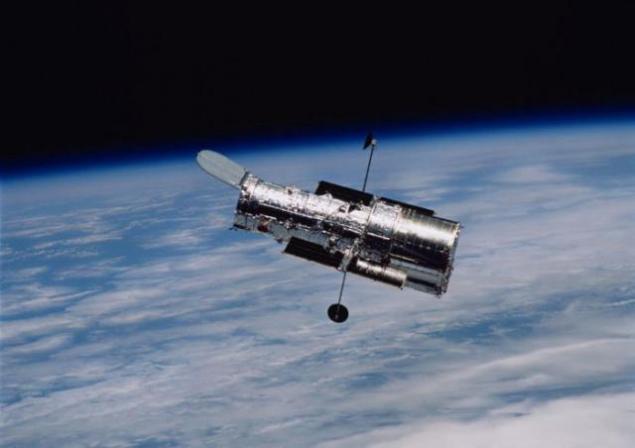
Due to the tremendous amount of shots and spectacular discoveries made by the telescope Hubble, many people there is a perception that this telescope has the highest resolution and is able to see such details that are not seen from Earth. For a while, and was, despite the fact that the world can gather large mirror telescopes, a significant distortion in the image brings the atmosphere. Therefore, even "modest" by earthly standards mirror diameter of 2, 4 meters in space, makes it possible to achieve impressive results.
However, in the years since the launch of Hubble Astronomy and earth did not stand still, it worked out a few technologies that, if not completely get rid of the distorting action of the air, that significantly reduce its impact. Today, the most impressive resolution can give Very Large Telescope of the European Southern Observatory in Chile. In the optical interferometer when working together four major and four auxiliary telescopes, it is possible to achieve the resolving power exceeding the capabilities of Hubble is about fifty times.
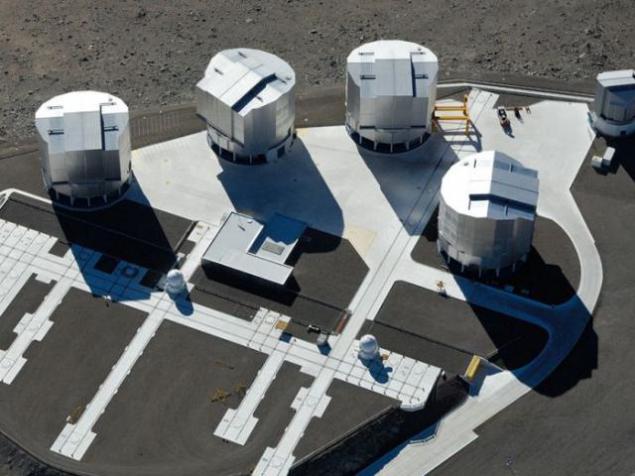
For example, if the Hubble gives permission to the moon is about 100 meters per pixel (greetings to all who think that because you can see landers Apollo), the VLT can distinguish details of up to 2 meters. Ie in its resolution of US landers or rovers we would look like 1-2 pixels (but are not playing because of the extremely high cost of working time).
Couple Observatory telescopes Keck, an interferometer, can exceed the resolution of Hubble tenfold. Even individually, each of the ten-meter telescope Keck, using adaptive optics technology, able to surpass Hubble Prima twice. For example, a photo of Uranus:
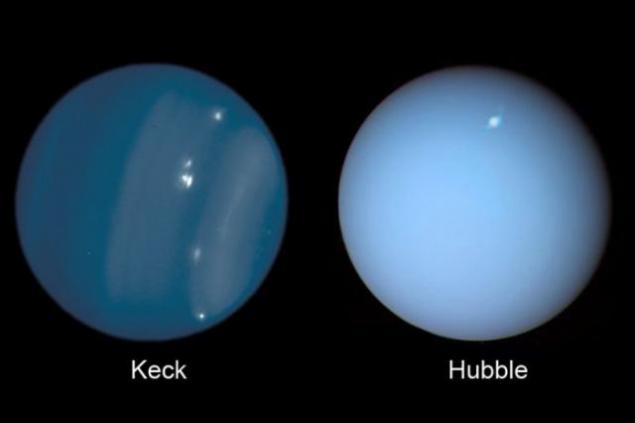
But Hubble is left without work, the sky a lot, and the breadth of the camera exceeds the Space Telescope ground capabilities.
Bears in Russia there are 19 times more often than the asteroids in the main asteroid belt
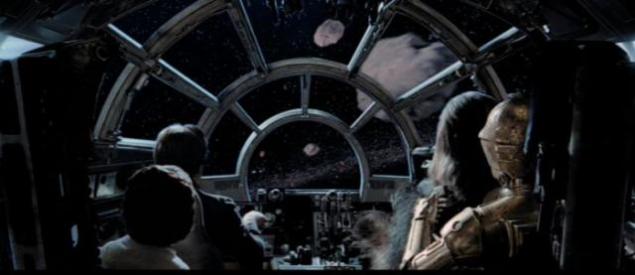
Scientific American popular website leads and Computerra translates curious calculations, which show that the journey to the asteroid belt is not as dangerous as it seemed to George Lucas. If all the asteroids larger than 1 meter positioned on the plane, equal to the area of the Main asteroid belt it turns out that one has to Kamenyuki approximately 3,200 square kilometers. 100 thousand. Russia bears should be distributed in pieces for every 170 square kilometers of territory. Course and asteroids and bears try to stay closer to sebepodobnyh and defile the pure mathematics its uneven distribution, but for a holiday such trifles can be neglected.
Hence

The temperature in the space to the Earth's orbit is + 4 ° C
To be precise, it is not the Earth's orbit, and the distance from the sun equal to the distance of the orbit of the Earth. And for a blackbody, ie such that fully absorb the sun's rays do not reflect back.
It is believed that the temperature in the space tends to absolute zero. Firstly, it is not so, because the whole known universe is heated to 3 K cosmic background radiation. Secondly, stars near the temperature rises. And we live pretty close to the sun. Strong heat protection suits and need spaceships because they are included in the shadow of the Earth and our star can not warm them up to the specified 4 ° C. In the shadow of the temperature can drop to -160 ° C, for example at night on the moon. It's cold, but still far from absolute zero.
Here, for example, the thermometer readings onboard satellite TechEdSat, which rotated in low Earth orbit:

It is influenced by the earth's atmosphere also, but in general, the graph shows is not the terrible conditions that adoption is in space.
Venus is sometimes leaden snow

This is perhaps the most striking fact about the cosmos, which I learned not so long ago. Terms and conditions on Venus is so different from anything that we could imagine that veneriane could fly safely in hell on earth to rest in a mild climate and comfortable conditions. Therefore, no matter how sound weird phrase "lead snow," Venus - it is a reality.
Thanks to the radar of the American probe Magellan first 90, the researchers found on the tops of the mountains some Venusian coating with high reflectivity in the radio. Initially suggested several versions: a consequence of erosion, deposition of iron-containing materials, etc. Later on, after several experiments in the world, we have come to the conclusion that this is the most natural snow metal consisting of bismuth and lead sulfides. In the gaseous state, they are released into the atmosphere during volcanic eruptions. Then the thermodynamic conditions at an altitude of 2600 m contribute to condensation and precipitation of compounds at higher elevations.
In our solar system, the planets ... 13 or more

When Pluto was demoted from planet, good manners was the knowledge that in the solar system eight planets. However, at the same, we introduced a new category of celestial objects - dwarf planets. This "nedoplanety" which have a rounded (or close to it) form draws the satellites are not, but in this case can not clear its own orbit from the less massive competitors. Today, it is believed that these five planets: Ceres, Pluto, Hanumea, Eris and Makemake. The closest to us - Ceres. A year later, we learn about it much more than it is now, thanks to the probe Dawn. So far we only know that it is covered with ice and two points on the surface of her water evaporates at a rate of 6 liters per second. About Pluto also learn in the next year, thanks to the station New Horizons. Generally, as in 2014 will be a year in space comets, 2015 promises to be a year of dwarf planets.
The rest of the dwarf planets are beyond Pluto, and any details about them, we do not learn soon. Just recently we found another candidate, although officially it to the list of dwarf planets are not included, as well as its neighbor Sedna. But it is possible that they will find another somewhat larger dwarfs, so the number of planets in the solar system still will grow.
Telescope Hubble - not the most powerful

Due to the tremendous amount of shots and spectacular discoveries made by the telescope Hubble, many people there is a perception that this telescope has the highest resolution and is able to see such details that are not seen from Earth. For a while, and was, despite the fact that the world can gather large mirror telescopes, a significant distortion in the image brings the atmosphere. Therefore, even "modest" by earthly standards mirror diameter of 2, 4 meters in space, makes it possible to achieve impressive results.
However, in the years since the launch of Hubble Astronomy and earth did not stand still, it worked out a few technologies that, if not completely get rid of the distorting action of the air, that significantly reduce its impact. Today, the most impressive resolution can give Very Large Telescope of the European Southern Observatory in Chile. In the optical interferometer when working together four major and four auxiliary telescopes, it is possible to achieve the resolving power exceeding the capabilities of Hubble is about fifty times.

For example, if the Hubble gives permission to the moon is about 100 meters per pixel (greetings to all who think that because you can see landers Apollo), the VLT can distinguish details of up to 2 meters. Ie in its resolution of US landers or rovers we would look like 1-2 pixels (but are not playing because of the extremely high cost of working time).
Couple Observatory telescopes Keck, an interferometer, can exceed the resolution of Hubble tenfold. Even individually, each of the ten-meter telescope Keck, using adaptive optics technology, able to surpass Hubble Prima twice. For example, a photo of Uranus:

But Hubble is left without work, the sky a lot, and the breadth of the camera exceeds the Space Telescope ground capabilities.
Bears in Russia there are 19 times more often than the asteroids in the main asteroid belt

Scientific American popular website leads and Computerra translates curious calculations, which show that the journey to the asteroid belt is not as dangerous as it seemed to George Lucas. If all the asteroids larger than 1 meter positioned on the plane, equal to the area of the Main asteroid belt it turns out that one has to Kamenyuki approximately 3,200 square kilometers. 100 thousand. Russia bears should be distributed in pieces for every 170 square kilometers of territory. Course and asteroids and bears try to stay closer to sebepodobnyh and defile the pure mathematics its uneven distribution, but for a holiday such trifles can be neglected.
Hence




